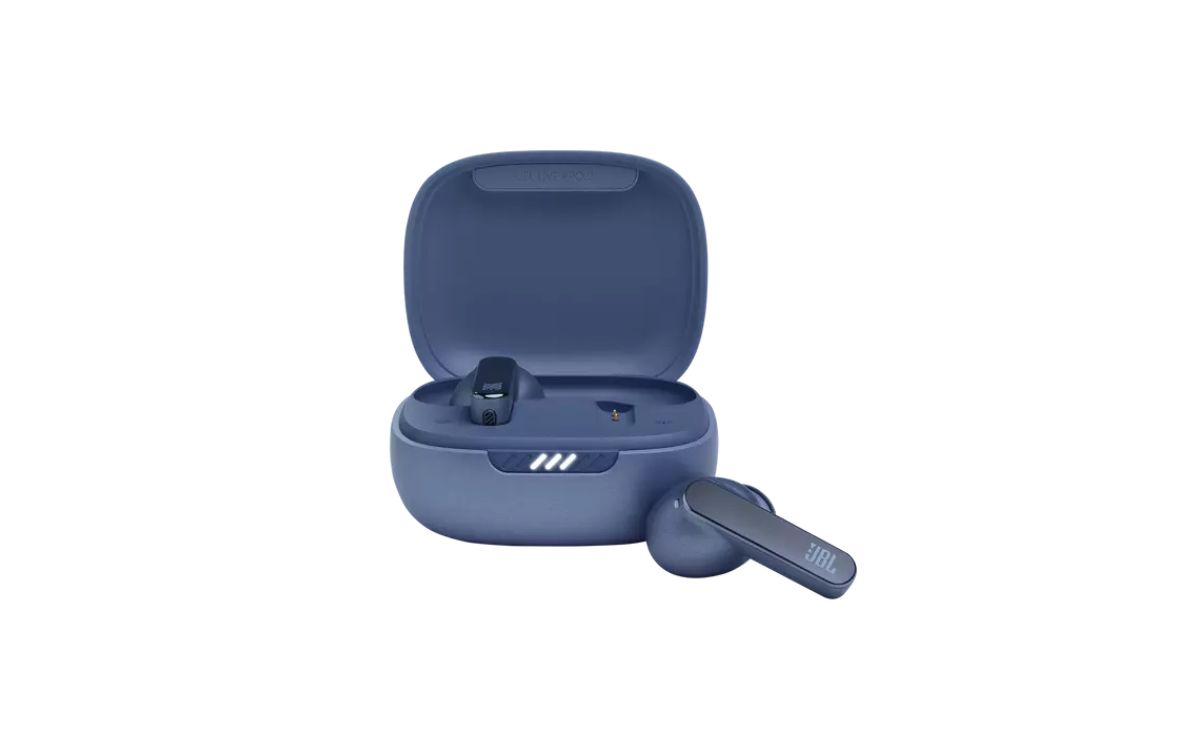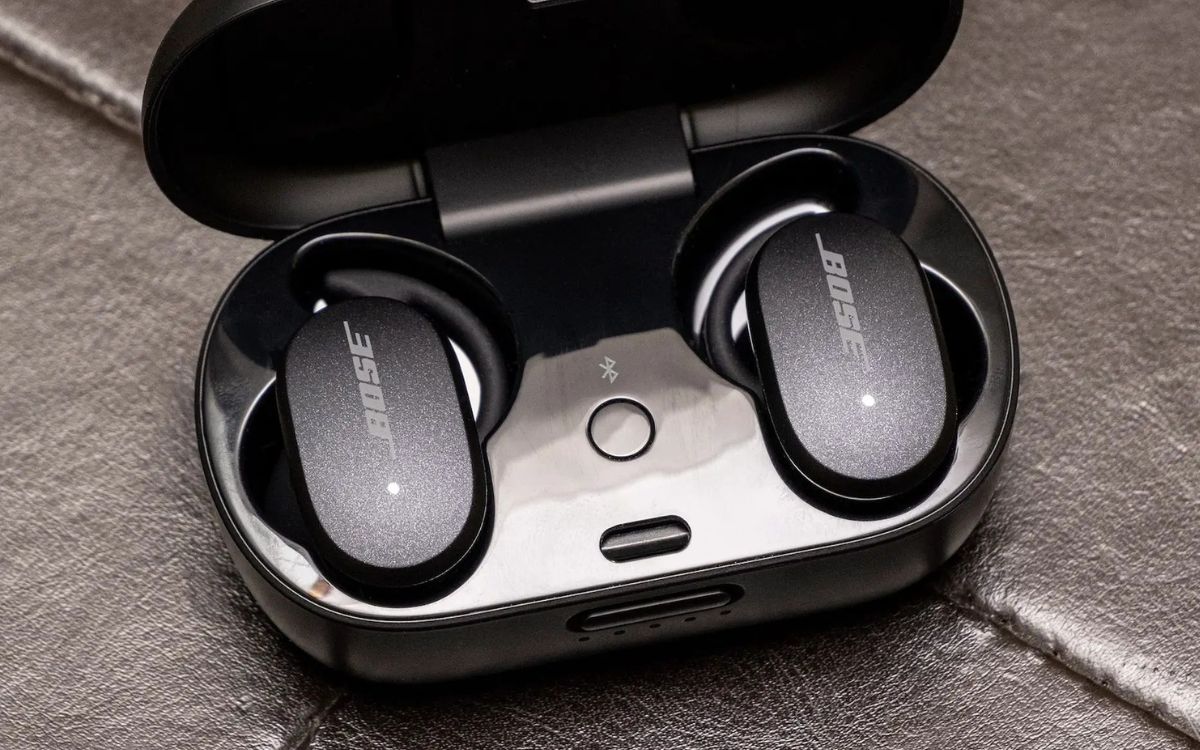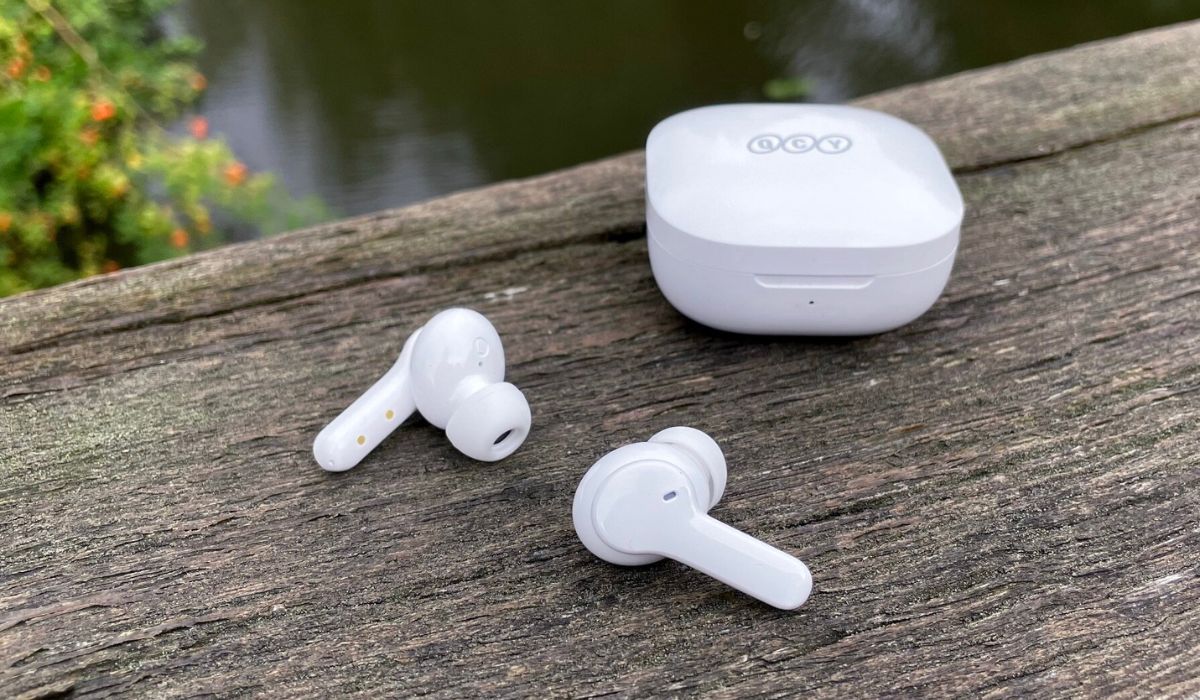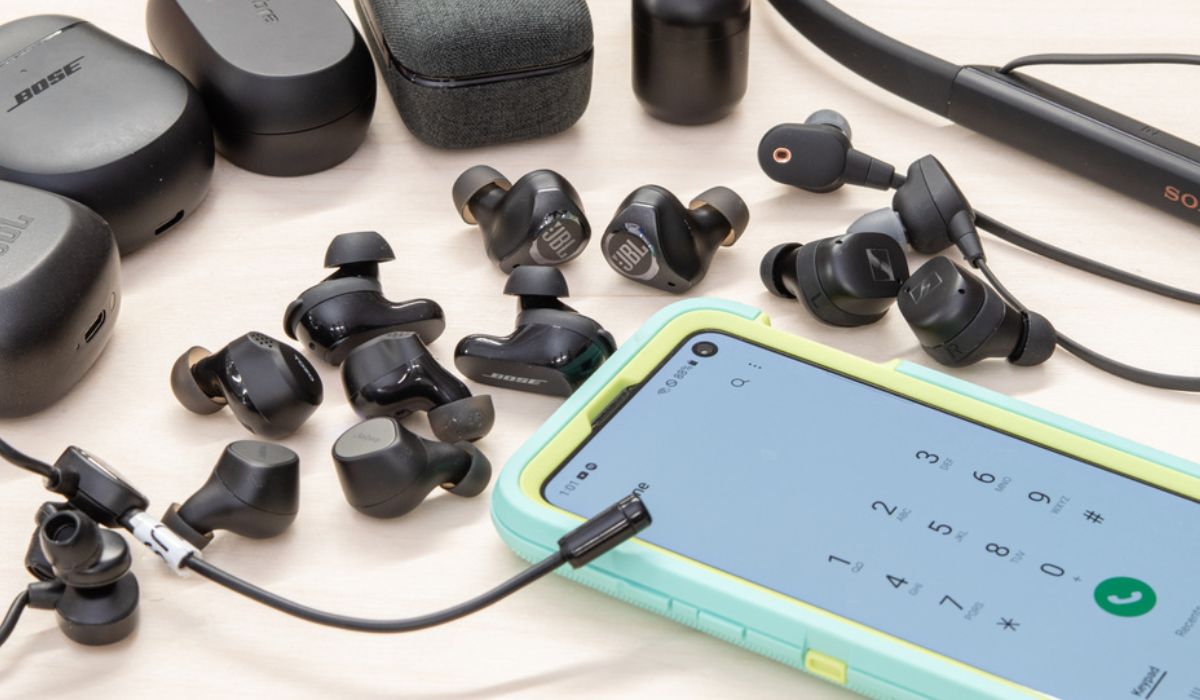Home>Devices & Equipment>Earbuds>How Do Earbuds Work


Earbuds
How Do Earbuds Work
Modified: January 22, 2024
Discover how earbuds work and the technology behind this popular audio accessory. Dive into the world of earbuds and experience high-quality sound on-the-go.
(Many of the links in this article redirect to a specific reviewed product. Your purchase of these products through affiliate links helps to generate commission for AudioLover.com, at no extra cost. Learn more)
Table of Contents
Introduction
Earbuds have become an essential accessory in our modern lives, providing us with a personal audio experience on the go. Whether you’re listening to your favorite music, watching a movie, or even taking calls, earbuds offer a convenient and immersive audio solution. But have you ever wondered how these tiny devices work?
In this article, we will explore the fascinating world of earbuds and unravel the science behind their functioning. We’ll delve into the anatomy of earbuds, understand how they produce sound, and discuss the different types of earbuds available in the market. Additionally, we’ll cover topics such as wired vs wireless earbuds, earbud connectivity, and the importance of noise isolation.
With this knowledge, you’ll be equipped to make informed decisions when choosing and using earbuds that suit your needs and preferences. Whether you’re a music enthusiast, a frequent traveler, or someone who simply enjoys the convenience of portable audio, understanding how earbuds work is the first step towards enhancing your audio experience.
So, let’s embark on this journey into the world of earbuds and discover the intricate mechanisms that allow us to immerse ourselves in sound.
Anatomy of Earbuds
To understand how earbuds work, it’s essential to familiarize yourself with their anatomy. Despite their small size, earbuds consist of several key components that work together to deliver high-quality audio.
1. Earbud Housing: The earbud housing is the outer shell that contains all the internal components. It is typically made of plastic or metal and comes in various shapes and sizes to accommodate different ear sizes and preferences. The housing also acts as a protective casing for the delicate innards of the earbud.
2. Speaker Driver: The speaker driver is the heart and soul of an earbud. It converts electrical signals into sound waves that we can hear. The driver is usually a tiny diaphragm made of materials like paper, plastics, or metal, and it vibrates to produce sound when it receives electrical impulses.
3. Earbud Cable: The cable connects the earbuds to the audio source. It is responsible for transmitting the electrical signals from the device to the speaker drivers. The cable is often coated with materials like rubber or fabric to provide durability and prevent tangling.
4. Audio Jack/Connector: The audio jack or connector is the interface between the earbuds and the audio source. For wired earbuds, it is a 3.5mm jack that plugs into the audio output of devices like smartphones, laptops, or music players. For wireless earbuds, the connector is present on the charging case or connects directly to the device via Bluetooth.
5. Control Buttons/Microphone: Many earbuds come with built-in control buttons and a microphone. These buttons allow you to adjust the volume, play/pause audio tracks, skip songs, and answer calls without reaching for the audio source. The microphone enables hands-free communication during phone calls and voice commands.
6. Earbud Tips: The earbud tips are the small silicone or foam attachments that fit inside the ear canal. They provide comfort, secure fit, and help in noise isolation. Different earbud tip sizes are available to accommodate various ear shapes and sizes.
The combination of all these components working together results in a compact and functional audio device that can be easily carried and used anywhere you go. Understanding the anatomy of earbuds is crucial in determining their performance and comfort level, hence allowing you to choose the best earbuds for your specific needs.
How Earbuds Produce Sound
Earbuds may be small in size, but they are capable of producing impressive sound quality. To comprehend how earbuds create sound, let’s delve into the basic principles behind their operation.
The process starts with the electrical signals generated by the audio source, whether it’s a smartphone, laptop, or any other device. These signals travel through the earbud cable and reach the speaker driver located inside the earbud housing.
The speaker driver consists of a diaphragm, a voice coil, and a permanent magnet. When the electrical signals reach the driver, they create an electromagnetic field that interacts with the magnet and voice coil. This interaction causes the diaphragm, which is attached to the voice coil, to vibrate rapidly.
The vibrations of the diaphragm create sound waves by compressing and expanding the air around it. These sound waves travel through the earbud housing and enter the ear canal through the earbud tips. As a result, you hear the audio content being played.
The quality of sound produced by earbuds depends on various factors, including the materials used in the driver diaphragm, the size of the driver, and the overall design of the earbud. High-quality earbuds employ advanced driver technologies and materials to deliver accurate sound reproduction across the frequency spectrum.
It’s worth noting that the size of the driver also plays a role in the sound output. Smaller drivers typically produce sound with a focus on clarity and detail, while larger drivers may offer more emphasis on bass response. The choice between different driver sizes depends on personal preference and the type of audio content you enjoy.
The ability of earbuds to produce sound with such clarity and precision in a compact form factor is truly remarkable. The advancements in driver technology have greatly contributed to the immersive audio experiences that earbuds can provide today. From crisp highs to deep lows, earbuds are capable of delivering a wide range of audio frequencies, allowing you to enjoy your favorite music, podcasts, and movies with exquisite sound quality.
Wired Earbuds vs Wireless Earbuds
When choosing earbuds, one of the crucial considerations is whether to opt for wired or wireless models. Each type has its own set of advantages and limitations. Let’s compare wired and wireless earbuds to help you make an informed decision.
Wired Earbuds:
Wired earbuds have been the traditional choice for many years. They are connected to the audio source via a cable, typically terminated with a 3.5mm audio jack. Here are some pros and cons of wired earbuds:
- Pros:
- Reliable and consistent audio quality
- No need to worry about battery life or charging
- Compatible with a wide range of devices with a 3.5mm jack
- Usually more affordable compared to wireless options
- Cons:
- Can be prone to tangling and cable wear and tear
- Limited range of movement due to the cable
- No remote control functions on the cable (though some models do offer inline controls)
- May not be compatible with devices that lack a 3.5mm audio jack, requiring an adapter
Wireless Earbuds:
Wireless earbuds have gained significant popularity in recent years, offering more freedom of movement and convenience. They connect to audio sources via Bluetooth technology and have their own onboard batteries. Here are the pros and cons of wireless earbuds:
- Pros:
- Greater freedom of movement without cables
- Convenience and portability, especially for workouts or outdoor activities
- Often come with charging cases for extended battery life
- Some models feature advanced features like noise cancellation and touch controls
- Cons:
- Battery life limitations requiring frequent recharging
- Possible audio latency and interference issues
- Higher cost compared to wired options
- Compatibility with devices that support Bluetooth connectivity
Ultimately, the choice between wired and wireless earbuds depends on your preferences and usage scenarios. If you prioritize reliability, affordability, and consistent audio quality, wired earbuds may be the right choice for you. However, if you value convenience, freedom of movement, and advanced features, wireless earbuds offer a compelling option.
It’s worth noting that advancements in wireless technology have resulted in significant improvements in audio quality and battery life for wireless earbuds. Additionally, the prevalence of smartphones and other devices without a dedicated audio jack has made wireless options more appealing to many users.
Consider your lifestyle, audio needs, and budget to determine which type of earbuds will provide you with the best audio experience.
Understanding Earbud Connectivity
One of the key aspects to consider when purchasing earbuds is the type of connectivity they offer. The way earbuds connect to your audio source can have a significant impact on their usability and functionality. Let’s explore the different types of connectivity options available for earbuds:
1. Wired Connectivity:
Wired earbuds connect to your audio source using a cable terminated with a 3.5mm audio jack. This type of connectivity has been around for decades and remains popular due to its reliability and compatibility with a wide range of devices. Wired connection ensures a consistent audio signal and eliminates concerns about battery life. However, it does limit your range of movement, and the cable can be prone to tangling.
2. Bluetooth Connectivity:
Bluetooth is a wireless technology that allows earbuds to connect to devices without the need for cables. This type of connectivity has gained immense popularity due to the convenience and freedom it offers. Bluetooth earbuds eliminate cable tangling and provide greater mobility, allowing you to move more freely without being tethered to your audio source. However, Bluetooth connectivity may introduce latency and potential interference issues. It’s important to choose earbuds with the latest Bluetooth versions for optimal performance.
3. True Wireless Connectivity:
True wireless earbuds take Bluetooth connectivity a step further by eliminating the need for any physical wires between the earbuds. Each earbud is a standalone device that connects wirelessly to your audio source and communicates with the other earbud to ensure synchronized audio playback. True wireless earbuds provide the utmost convenience and freedom of movement. However, they may come with shorter battery life due to their compact size, and the small form factor can pose challenges for signal stability.
When choosing earbuds based on connectivity, consider your lifestyle, intended usage, and the devices you plan to pair them with. If you prefer a hassle-free experience and want to enjoy audio without any wires, wireless or true wireless earbuds may be the right choice for you. On the other hand, if you prioritize reliability and compatibility with a wider range of devices, wired earbuds may be more suitable.
It’s essential to ensure compatibility with your audio source by checking specifications and supported connectivity options. Additionally, make sure to consider the wireless range and battery life offered by the earbuds to meet your specific needs. Understanding the different connectivity options available will empower you to choose earbuds that seamlessly integrate with your lifestyle and deliver the audio experience you desire.
Types of Earbud Drivers
The driver is the core component of earbuds responsible for converting electrical signals into sound waves. Different types of drivers are used in earbuds, each offering unique characteristics and sound profiles. Let’s explore the most common types of earbud drivers:
1. Dynamic Drivers:
Dynamic drivers are the most commonly used type of driver in earbuds. They consist of a diaphragm attached to a voice coil within a magnetic field. When electrical signals are passed through the voice coil, it rapidly moves the diaphragm back and forth, producing sound waves. Dynamic drivers tend to deliver a balanced sound signature, with a focus on clarity and accuracy across the frequency range.
2. Balanced Armature Drivers:
While dynamic drivers are known for their overall balance, balanced armature drivers offer a different approach. These drivers use a lever system with a magnetic coil that moves an armature connected to the diaphragm. Balanced armature drivers excel in reproducing precise, detailed sound across specific frequency ranges. Multiple balanced armature drivers can be used in a single earbud to cover different frequency ranges, resulting in more accurate and detailed sound reproduction.
3. Planar Magnetic Drivers:
Planar magnetic drivers are less common in earbuds but are renowned for their high-fidelity audio reproduction. They consist of a thin diaphragm with a conductive pattern placed between magnets. When electrical signals pass through the conductive pattern, a magnetic field is created, causing the diaphragm to vibrate and produce sound. Planar magnetic drivers offer exceptional clarity, accuracy, and a wide soundstage, perfect for audiophiles who seek rich, immersive audio experiences.
4. Electrostatic Drivers:
Electrostatic drivers are the pinnacle of audio quality but are less commonly found in earbuds due to their high cost and complexity. These drivers work by using an ultra-thin diaphragm suspended between two stators that hold a static charge. When audio signals are applied to the stators, the diaphragm moves, producing sound waves. Electrostatic drivers deliver unmatched detail, speed, and transparency, resulting in a lifelike audio experience.
Understanding the different types of drivers used in earbuds can help you narrow down your options based on your desired sound signature. Dynamic drivers are the most common and provide a balanced sound profile. Balanced armature drivers focus on precise sound reproduction, planar magnetic drivers offer exceptional audio quality, and electrostatic drivers deliver unparalleled detail and transparency.
When choosing earbuds, keep in mind that driver quality is just one factor that determines sound quality. The overall design, tuning, and other factors can also influence the audio performance. Therefore, it’s essential to consider the overall package and find a pair of earbuds that suit your personal preferences and audio requirements.
Noise Isolation in Earbuds
Noise isolation is an important feature in earbuds that helps block out external sounds, allowing you to enjoy your audio content without distractions. It creates a seal between the earbuds and your ear canal, reducing the amount of ambient noise that reaches your ears. Let’s explore how noise isolation works and its benefits:
1. Earbud Tips:
The primary component that contributes to noise isolation in earbuds is the earbud tips. These small attachments made of silicone or foam create a snug fit inside the ear canal, effectively sealing off the entrance. They come in various sizes to accommodate different ear shapes and sizes. The proper fit ensures that external noise is blocked, and the audio produced by the earbuds is directed into your ear.
2. Passive Noise Isolation:
Passive noise isolation refers to the physical design of the earbuds and their ability to block out external noise without the need for any active technology. By creating a tight seal inside the ear canal, earbud tips prevent most ambient sounds from entering. This passive process allows you to enjoy your audio without having to increase the volume excessively, which can help protect your hearing in the long run.
3. Benefits of Noise Isolation:
There are several benefits to having noise isolation in earbuds:
- Enhanced sound quality: By blocking out background noise, noise isolation allows you to focus on the audio content. This results in improved clarity and detail, as you can pick up nuances and subtleties that might otherwise be masked by external noise.
- Reduced listening fatigue: When using earbuds in noisy environments, you might tend to increase the volume to compensate for the external noise. Noise isolation eliminates the need for higher volume levels, reducing listening fatigue and potential long-term damage to your hearing.
- Privacy: Noise isolation helps maintain privacy, preventing others around you from overhearing your audio content, whether it’s during a phone call or while enjoying music or podcasts.
- Immersive experience: With external distractions minimized, noise isolation creates a more immersive audio experience, allowing you to fully immerse yourself in the audio content and feel more connected to it.
When choosing earbuds, consider the quality and effectiveness of the noise isolation they offer. Look for earbuds with high-quality earbud tips that provide a secure and comfortable fit. Foam tips often offer better noise isolation than silicone tips due to their ability to conform to the shape of your ear canal. Keep in mind that a proper fit is crucial for optimal noise isolation, so take the time to find the right size and type of earbud tips for your ears.
Noise isolation in earbuds is a valuable feature that enhances your audio experience by reducing external noise, allowing you to fully enjoy your favorite music, podcasts, and other audio content in any environment.
Tips for Choosing and Using Earbuds
Choosing the right pair of earbuds and using them correctly can greatly enhance your audio experience. Here are some tips to help you make an informed decision and get the most out of your earbuds:
1. Consider Comfort and Fit:
Comfort is key when it comes to earbuds, especially if you plan on wearing them for extended periods. Look for earbuds that come with different sizes of earbud tips to ensure a proper and comfortable fit. Experiment with different sizes and materials (such as silicone or foam) to find the option that suits you best.
2. Evaluate Sound Quality:
Sound quality is crucial for an enjoyable audio experience. Consider factors such as driver type, frequency response, and overall audio profile when selecting earbuds. If possible, test them out or read trusted reviews to get a sense of how they sound before making a purchase.
3. Choose Wired or Wireless:
Decide whether you prefer the freedom of wireless earbuds or the reliability and compatibility of wired options. Wired earbuds are great for those who don’t want to worry about battery life or syncing issues, while wireless earbuds offer convenience and freedom of movement. Consider your lifestyle and preferences to make the right choice.
4. Pay Attention to Battery Life:
If you opt for wireless earbuds, battery life is an important consideration. Look for earbuds with sufficient battery life to meet your needs, whether it’s for long commutes, workouts, or extended listening sessions. Also, consider the charging case’s capacity, as it allows you to recharge your earbuds on the go.
5. Take Note of Controls and Features:
Consider the control options available on the earbuds. Some models have built-in controls for adjusting volume, skipping tracks, and answering calls. Additionally, features like active noise cancellation, water resistance, and voice assistant integration may be important depending on your preferences and intended use.
6. Practice Proper Earbud Maintenance:
To ensure the longevity and performance of your earbuds, practice good maintenance habits. Keep them clean by wiping them with a soft cloth, and avoid exposing them to excessive moisture. Store them in a protective case when not in use to prevent damage and tangling of cables.
7. Take Breaks and Protect Your Hearing:
Give your ears regular breaks from wearing earbuds, especially at high volumes. Prolonged exposure to loud audio can contribute to hearing damage over time. Follow the 60/60 rule: listen at no more than 60% volume for no more than 60 minutes at a time.
By following these tips, you can choose earbuds that suit your needs, provide optimal comfort and sound quality, and ensure a long-lasting, enjoyable audio experience. Remember to take care of your ears by using your earbuds responsibly and maintaining good listening habits.
Conclusion
Earbuds have revolutionized the way we experience audio in our daily lives. Whether through the convenience of wireless connectivity or the reliability of wired connections, these compact devices allow us to immerse ourselves in our favorite music, podcasts, and more.
Understanding the anatomy of earbuds, how they produce sound, and the different types of drivers used can help us make informed decisions when selecting the right pair for our needs. Whether you prefer the balanced sound of dynamic drivers or the precise detail of balanced armature drivers, there is a wide variety of options available to suit every preference.
Noise isolation plays a vital role in enhancing our audio experience by blocking out external disturbances. By choosing earbuds with the appropriate earbud tips and understanding how to achieve a proper fit, we can enjoy our audio content in a more immersive and uninterrupted manner.
When it comes to choosing and using earbuds, comfort, sound quality, connectivity options, battery life, and additional features are all important factors to consider. By taking these factors into account, we can ensure that our earbuds are tailored to our needs and provide the best audio experience possible.
Finally, it’s essential to prioritize our hearing health. By practicing proper earbud usage, taking breaks, and listening at safe volume levels, we can enjoy our audio content while protecting our long-term hearing abilities.
In conclusion, understanding how earbuds work and the various factors that contribute to their performance allows us to make informed decisions when choosing and using these devices. Whether for entertainment, communication, or productivity, earbuds have become an integral part of our modern lifestyle, providing us with portable and immersive audio experiences.











